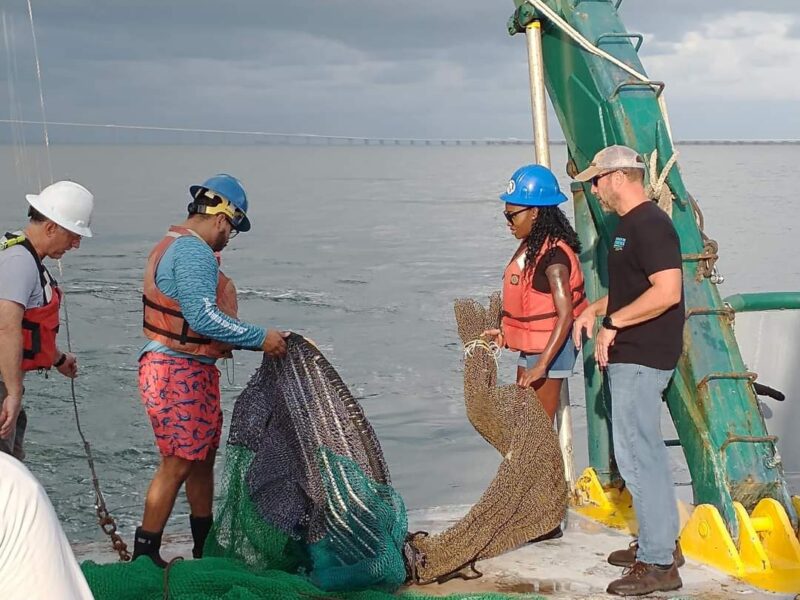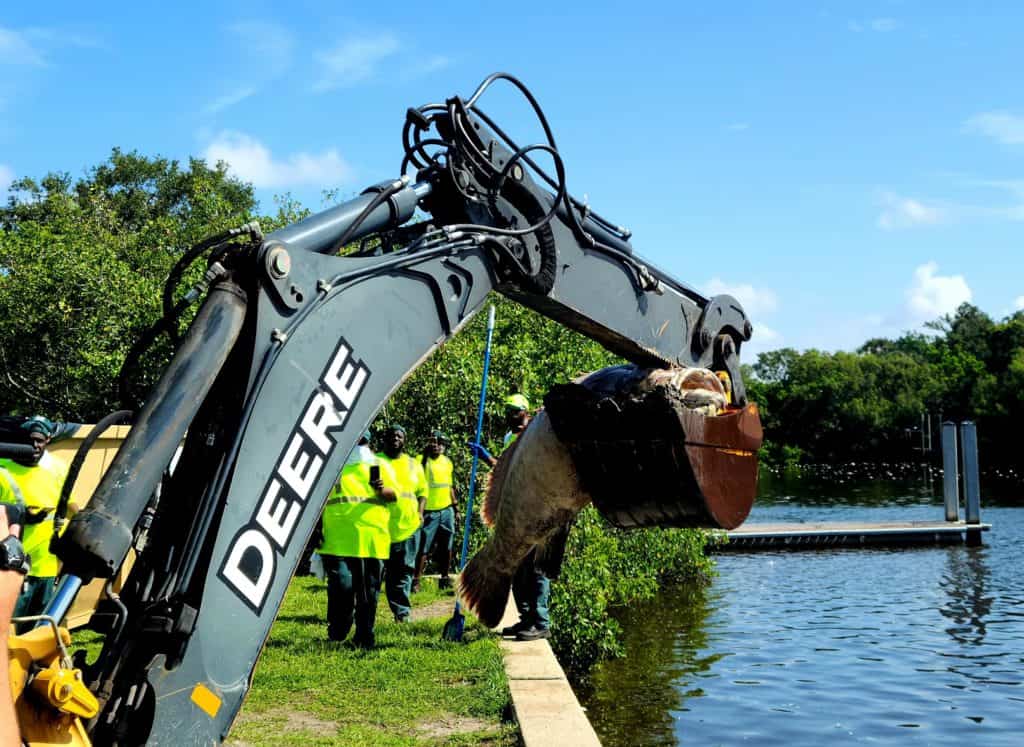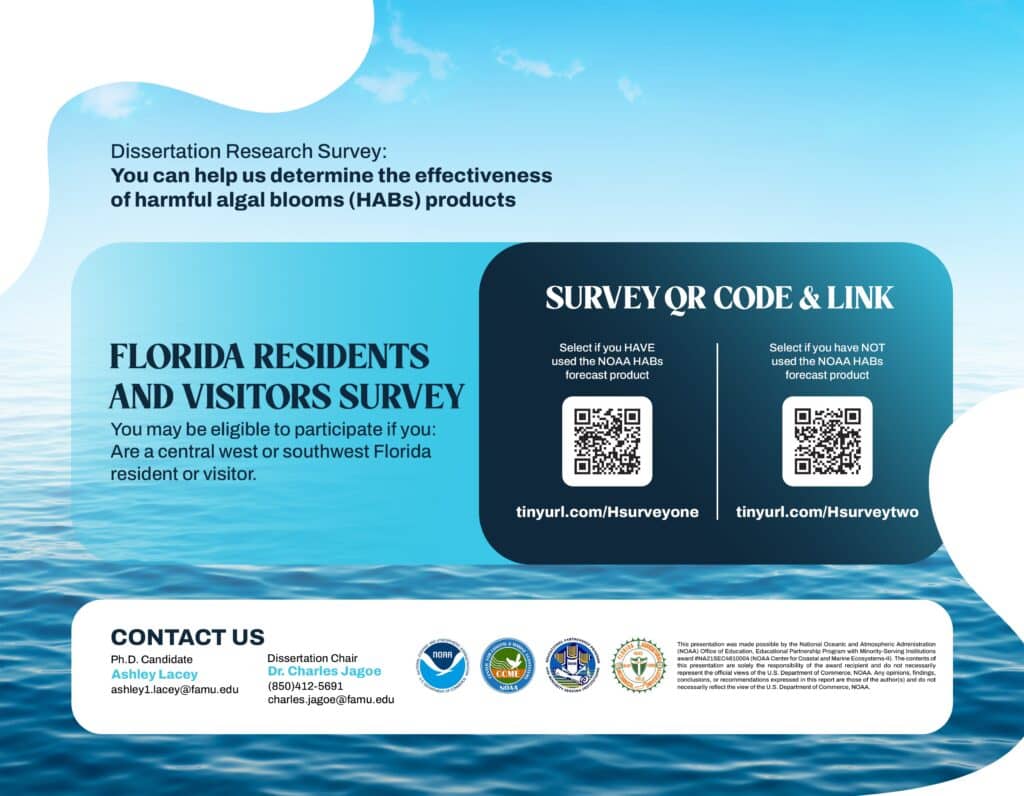Thrive
How improving red tide forecasts can also increase diversity

The National Oceanic and Atmospheric Administration (NOAA) is working to discern the effectiveness of its red tide forecasting tool, particularly among underserved communities.
Local marine science stakeholders also hope to increase access to an industry not known for its diversity.
NOAA’s Harmful Algal Bloom Forecasting (HABF) platform provides current and short-term forecasts of respiratory impacts caused by red tide (Karenia brevis) toxins at local beaches. Health officials use the early warning system to guide beach and shellfish harvesting closures.
The agency’s National Centers for Coastal Ocean Science (NCCOS) states that the tool also helps area seafood and tourism industry leaders minimize impacts from the annual toxic algal blooms. However, stakeholders remain unsure of the platform’s community effectiveness and perceptions.
“This tool is one of a couple out there that I don’t think a lot of people know about,” said Alison Barlow, executive director of St. Petersburg’s Innovation District. “And it can help them make decisions around their exposure.
“I also think that as young people, particularly, start to use prediction tools like this, they start to see opportunities for future careers.”
Ashley Lacey, a PhD candidate at Florida A&M University, was once one of those young people. She will soon become an environmental scientist and created a local public information campaign as part of her dissertation.
Her overall goal is to gather feedback from the St. Petersburg community. Lacey wants to know who uses the platform and why some people remain unaware of its existence and benefits.
She will then share the data with NOAA to better understand how residents and tourists perceive the agency’s products. “It’s there for the public,” Lacey said.
“We want to share science information with people,” she added. “This data will help a lot because maybe there’s some things we can change with how we communicate with the public.”
Lacey now needs the community’s help. Two surveys – one for those who have used the forecasting platform and one for those who have not – are at the center of her project.
She stressed the importance of receiving feedback from multiple demographics. The anonymous surveys ask people to list their age, gender, educational background and race.
A project focus is reaching underserved communities, which Lacey said are often minorities. She seeks community partners to help her reach underrepresented stakeholders at local events.
While she lives in Tallahassee at the Historically Black College and University (HBCU), she grew up in the Tampa Bay area. Lacey’s partners at NOAA suggested she focus on St. Petersburg due to its frequent red tide outbreaks and varied demographics.

City workers pull a bloated goliath grouper from a St. Petersburg waterway during the 2021 red tide outbreak. Workers estimated the fish weighed around 400 pounds. Photo by Mark Parker.
The first local stakeholder Lacey recruited was Barlow, who also oversees the Maritime and Defense Technology Hub. The Innovation District has become a mecca for marine science due to the preponderance of agencies – including NOAA – that operate in the area.
Barlow has worked with NOAA and FAMU on previous initiatives. She said it “made a lot of sense for us to help her out and help our community out at the same time.”
Barlow offered Lacey space to work at the Hub during her frequent visits. Barlow noted that the Innovation District’s Science Festival has worked to stoke industry passions for a decade, and its Digital Inclusion Project helps ensure residents can access tools like the red tide platform.
“We know that the blue economy fields are not always as diverse as they should be,” Barlow said. “The more we can create awareness about the water, natural habitats and even the technology related to it, the more we can probably increase future career opportunities.”
Lacey participated in an August expedition aboard the R/V Western Flyer, the University of South Florida and Florida Institute of Oceanography’s (FIO) latest research vessel. FIO’s leadership has stressed that the ship’s design and programming will increase marine science access among underserved communities.
The burgeoning environmental scientist will participate in a Saturday Shoppes fall festival event Oct. 21. She hopes to increase those local opportunities to provide informational material and show people who look like her that they belong in the industry.
Lacey said she never met a Black scientist – much less a Black female marine scientist – growing up, and that makes her “a bit more passionate about being able to be that image.”
“Imagery matters,” Lacey added. “I don’t think people know how much it actually matters because you remember those types of things, and it makes you feel like I can do that, too.”
Interested Pinellas County organizations can reach Lacey at ashley1.lacey@famu.edu.








